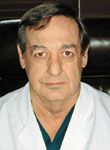- General Dermatology
- Eczema
- Alopecia
- Aesthetics
- Vitiligo
- COVID-19
- Actinic Keratosis
- Precision Medicine and Biologics
- Rare Disease
- Wound Care
- Rosacea
- Psoriasis
- Psoriatic Arthritis
- Atopic Dermatitis
- Melasma
- NP and PA
- Skin Cancer
- Hidradenitis Suppurativa
- Drug Watch
- Pigmentary Disorders
- Acne
- Pediatric Dermatology
- Practice Management
Injection lipolysis dissolves fat, solidifies questions
National report - General surgeon Jay L. Richardson, M.D., says lipolysis injections work to nonsurgically rid patients of fat deposits - however, Dr. Richardson, medical director of the Vein Treatment and Aesthetic Center, in Shawnee Mission, Kan., also concedes that many are in a state of confusion about this new option for fat removal.

One of the problems, according to Dr. Richardson, is the American term for the procedure, which was first described abroad, is "LipoDissolve." That, he says, is a marketing term, created by the Advanced LipoDissolve company in St. Louis. The actual procedure is injection lipolysis, which involves using no sedation but needles to subcutaneously inject a prescribed formulation of phosphatidylcholine (PC), an enzyme occurring naturally in bile. The drug, used for decades and Food and Drug Administration (FDA)-approved to treat acute fat embolisms, dissolves the unwanted pockets of fat.
A rose by any other name
" 'Mesotherapy' is a broad term for any injection into the mesoderm. There have been a variety of products - LipoDissolve is one. PPC is the active ingredient in most," Dr. Matarasso says.
"Right there, you have the problem. There has been a lot of variation in the products that people are using to inject into the skin and in the claims they are making - whether it is to reduce fat or cellulite."
Dr. Richardson uses injection lipolysis - like many use liposuction - under the eyes, on the neck, arms, torso, abdomen, love handles, hips, buttocks, thighs and ankles. He also uses it to treat cellulite.
Consistency quandary
U.S. doctors seem not to be adhering to the technique and formula prescribed by the International Society of Lipolysis Therapy, comprised of some of the pioneers of the procedure in Germany, Austria and Brazil.
That inconsistency is a dangerous thing, according to Dr. Richardson.
"Doctors must learn how to do injection lipolysis, and learn how to do it well. They need to use a very good formula and get the medicine from a very good pharmacy," Dr. Richardson says. "The trouble is, if you do not do a good job, the patient will get lumpiness or no fat reduction."
Dr. Matarasso, who published a review of studies looking at mesotherapy in the April 15, 2005 edition of Plastic and Reconstructive Surgery, says the studies are just beginning to surface which show how and why injection lipolysis works. But he agrees that standardization of formula, technique and outcomes is lacking.
"Liposuction is still the gold standard, and it should be. Liposuction - the way it is performed today - it can be an outpatient procedure with minimal anesthesia and most people can usually return to work the next day. But it is human nature to want a pill or cream or injection before an operation," Dr. Matarasso says.
Who - and why?
Dr. Matarasso has not yet begun performing injection lipolysis in his practice but says he may refer patients to a colleague who does.
The patients he would consider are those who are not candidates for liposuction, do not want surgery for small areas of localized fat or want to do something about their cellulite, for which liposuction is inappropriate. He says that he informs patients that he does not know about the long-term outcomes of the procedure, but if they want, they can consider this option.
"Lipolysis is not a replacement for large-volume liposuction but if studies prove it to be safe and effective, it might be an adjunct to the body contouring practice," he says.
